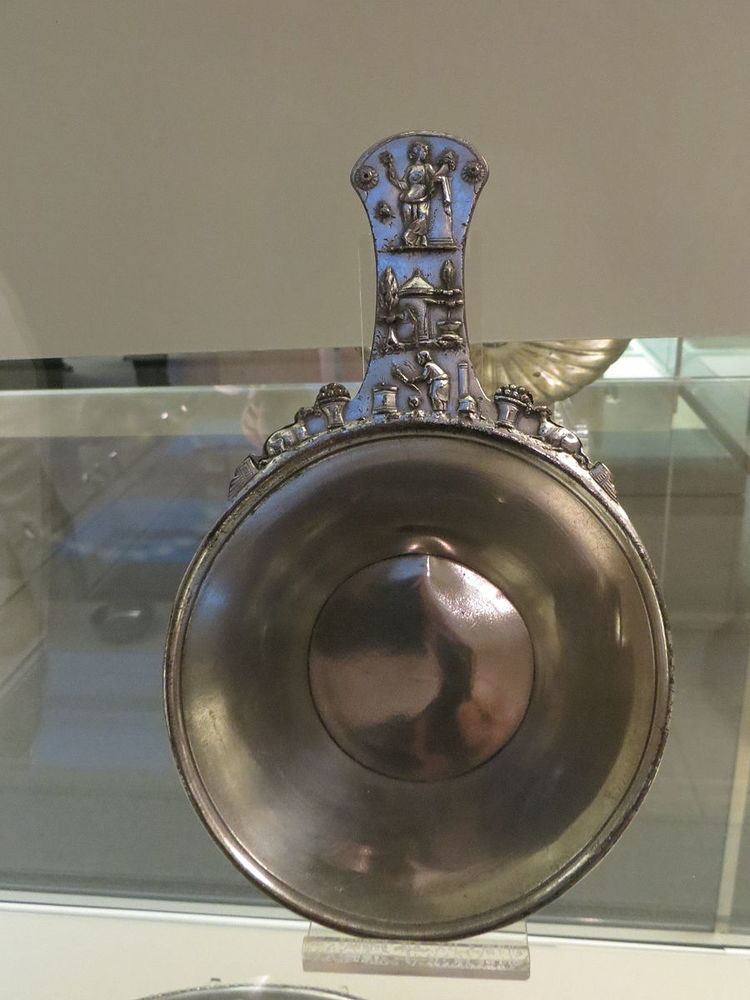Material Silver Created 2nd-3rd Century AD | Size Length 23.5 cm | |
 | ||
The Chatuzange Treasure is the name of an important Roman silver hoard found in the village of Chatuzange-le-Goubet in the department of Drôme, south-eastern France. Since 1893 it has been part of the British Museum's collection.
Contents
Discovery
In the district of La Part-Dieu near Chatuzange-le-Goubet, among the ruins of a large Roman villa, a significant silver hoard was unearthed in 1888. The treasure, which consists of six pieces of antique dishes, seems to have been buried for safe-keeping, perhaps during the period of local insurrections that occurred at this time in Roman Gaul. It was discovered by the land-owner of the site who subsequently sold the treasure to a Paris art dealer, who in turn sold it to the British Museum in London.
Description
The whole treasure is composed of six pieces of high quality Roman silver that dates from the 2nd and 3rd centuries AD and has a total weight of 5.6 kg. There are two skillets, one of which is decorated with the figure of Felicitas between two rosettes and below her a woman offering a sacrifice at an altar, while the other is adorned with the necks of swans and a basket of fruit. Other items in the treasure include a large fluted washing-bowl with the figures of the Three Graces in the central panel, another fluted dish, a large plate and a small cup, both with a niello inlaid swastika, which was a relatively common symbol in the Roman Empire.
